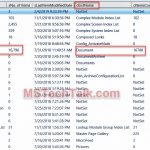
SharePoint Online is a powerful collaboration platform that allows teams to store, organize, and share files and information. However, as with any platform that involves sharing information, it’s important to take steps to ensure that your data is secure. In this blog post, we’ll explore five best practices for securely sharing files and information in SharePoint Online.
Set up permissions and access controls
One of the most important steps in securing your SharePoint Online site is to set up permissions and access controls. This means ensuring that only authorized users have access to sensitive information, and that permissions are set up in a way that ensures that users can only access the data they need to do their job. SharePoint Online offers a variety of options for managing permissions, including site-level permissions, group-level permissions, and item-level permissions.
Use secure links and passwords
When sharing files or information with external parties, it’s important to use secure links and passwords to ensure that only the intended recipient can access the information. SharePoint Online allows you to generate secure links with expiration dates and passwords, which can help ensure that sensitive information isn’t accessed by unauthorized parties.
Implement data loss prevention policies
Data loss prevention (DLP) policies are an essential component of any SharePoint Online security strategy. DLP policies allow you to identify and protect sensitive information, such as credit card numbers or social security numbers, by preventing unauthorized access and monitoring for potential breaches. SharePoint Online offers a variety of built-in DLP policies, or you can create custom policies to meet your specific needs.
Monitor user activity
Another important aspect of securing your SharePoint Online site is monitoring user activity. By tracking user activity, you can detect suspicious behavior, such as multiple failed login attempts or unauthorized access attempts. SharePoint Online offers a variety of tools for monitoring user activity, including audit logs and activity reports.
Use encryption and other security features
Finally, it’s important to use encryption and other security features to protect your data. SharePoint Online supports encryption at rest and in transit, which can help ensure that your data is protected from unauthorized access. Additionally, SharePoint Online offers a variety of other security features, such as two-factor authentication and conditional access policies, which can help further secure your site.
SharePoint Online offers a variety of powerful tools for collaborating and sharing information, but it’s important to take steps to ensure that your data is secure. By following these five best practices, you can help ensure that your SharePoint Online site is protected from unauthorized access and data breaches.











No Comments